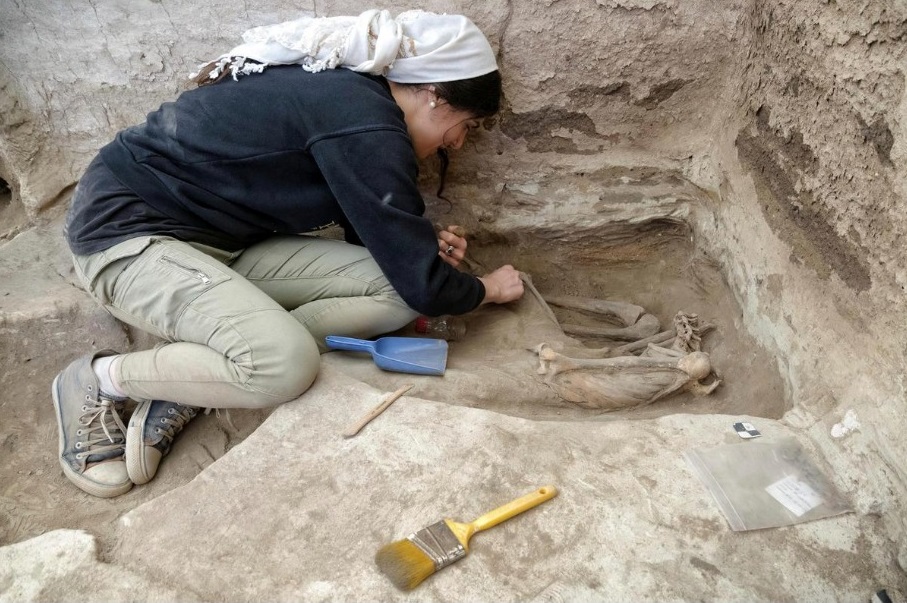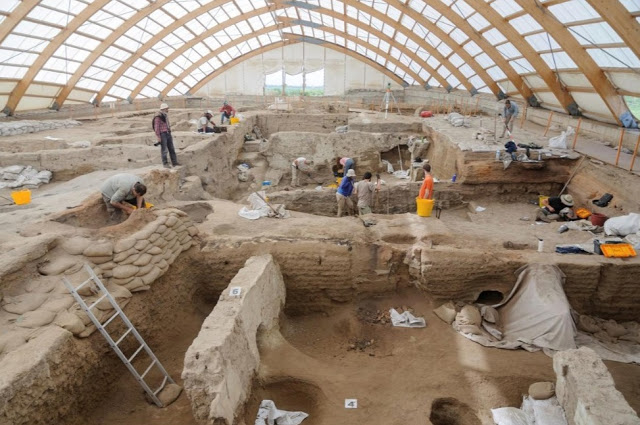Ҫatalhöyük, near Konya, in southern Turkey, has been internationally famous as a large Neolithic settlement since its discovery in 1958.
The 32-acre site is now thought to date back to at least 7,000 BC, and at its height may have housed as many as 8,000 people.
Although it was one of man’s earliest attempts at settled, communal living, excavations resumed in 1993 now suggest its residents soon experienced some of the worst effects of modern inner-city life.
Residents lived in very crowded conditions, with rubbish pits and animal pens right next to their homes. So there were a whole host of sanitation problems that could have spread the infectious diseases indicated by their skeletons.
Examination of burials – often found inside the houses themselves – shows that a high proportion of them suffered head wounds and other violent attacks, often from behind, which may have been caused by the crowded living-conditions.
In a sample of 93 skulls from Çatalhöyük, more than one in four – 25 individuals – showed evidence of healed fractures. And 12 of them had been victims more than once, with two to five injuries over a period of time. The shape of the lesions suggested that blows to the head from hard, round objects caused them – and clay balls of the right size and shape were found at the site.

The early farmers’ grain-heavy diet led to a lot of dental problems. And researchers found another dental surprise: most members of a household were not biologically related. Their teeth weren’t as similar as would be expected if they were from the same family.
This is just one of many puzzles raised by this fascinating site, and you can find further details at Archaeology News Network/Çatalhöyük.
Main photo, top: Urban Stories-2a: excavations in Neolithic buildings at Çatalhöyük © Scott Haddow / Archaeology News Network/Çatalhöyük.





